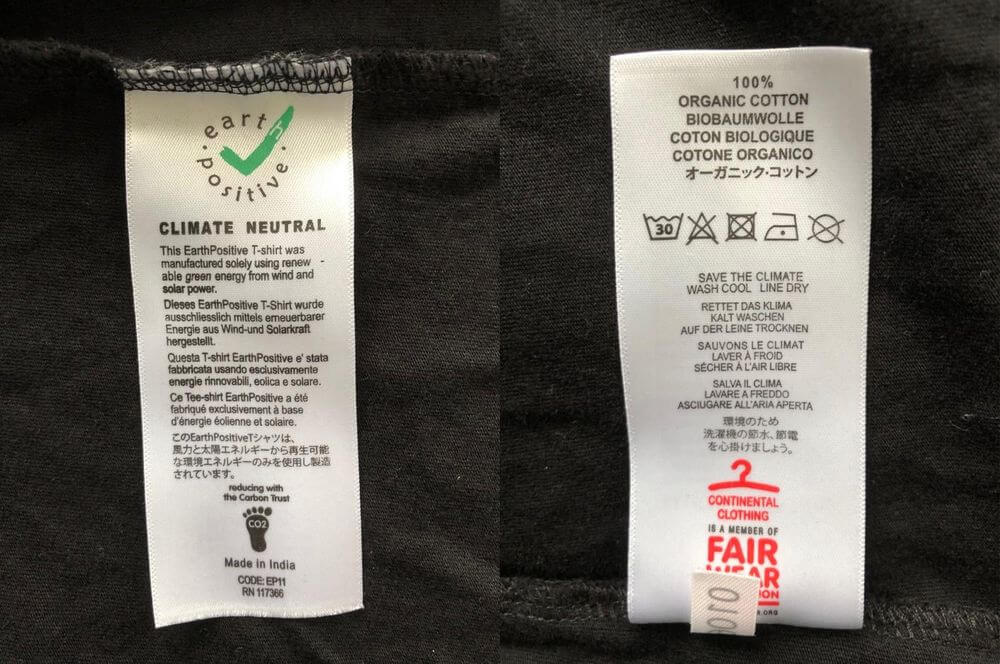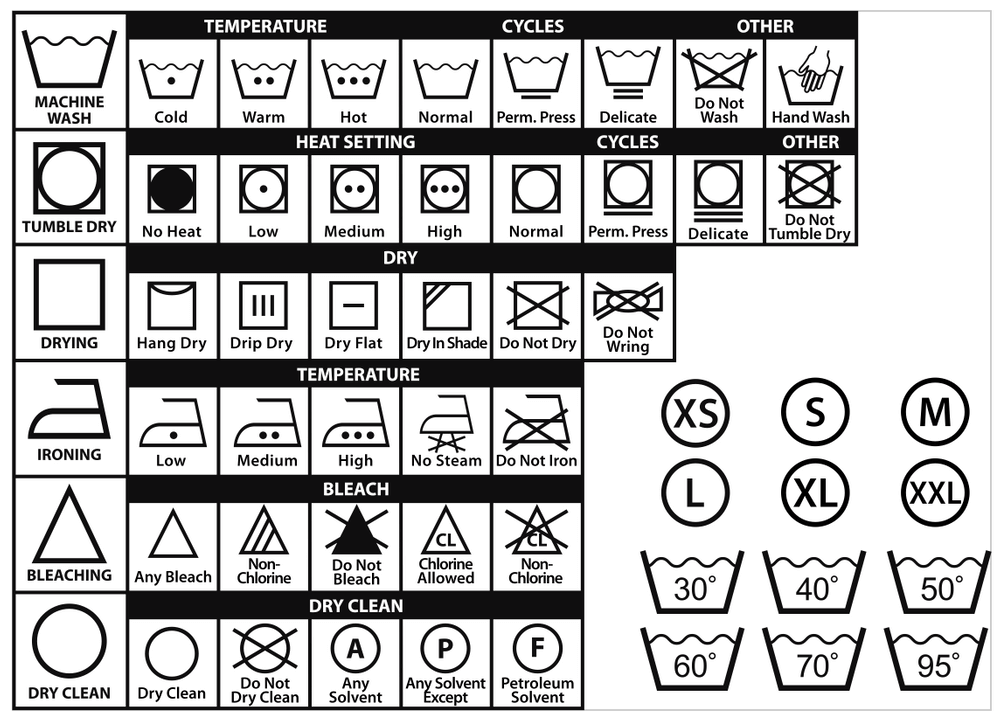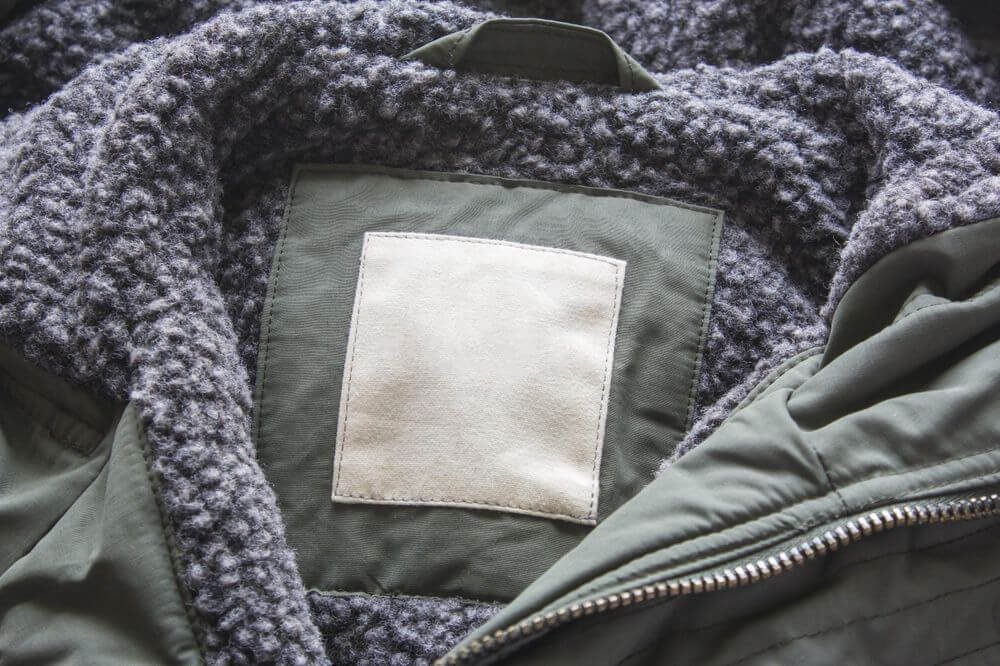Garment Labelling Requirements for Clothing (Full Guide)
When you are designing and producing clothing, the positioning of the garment label is an important aspect of the production process. This element is identified in our How To Make a Tech Pack article, and it is a major part of the overall specifications during production. However, it’s not just where the label is placed on your clothing that is important. The information that the label contains, such as care labeling and flammability information, is also significant.
Garment labeling isn't new in clothing production, but it is something to consider. It's important to ensure that you adhere to local regulations and laws such as those handed down by the Federal Trade Commission (FTC), and this simple guide will help you identify the information that is required. In addition, we'll inform you about some other details that you should include to improve your customer service.
Does Clothing Require a Label?

In short, yes. Not only does a label establish your clothing and brand identity, but it also gives instructions that help the customer best care for the garment long after purchase. Clothing labeling is so important, in fact, that consumer protection agencies in the United States, Canada, and abroad have stringent care labeling requirements. In addition, certain independent organizations, such as the International Organization for Standardization (ISO), have their own labeling requirements that companies must follow if they wish to receive certification.
While the garment label requirements of different countries are similar in that these regulations are all in place for consumer protection purposes, there are some important differences between these requirements that you'll need to know about if you want to sell clothing or household textile items internationally. A simple tag on the inside center area of a garment reading "Made in the USA" simply won't cut it, but we'll help you navigate the complex legal framework surrounding garment care information labeling to help you transform your company name into a household name all across the globe.
Which Regulatory Bodies Oversee Garment Labeling?
In the United States, the FTC and the U.S. Customs and Border Protection (CPB) oversee the labeling requirements for textile and apparel products. The FTC ultimately handles the administration of care labeling rules in this country, but the CPB handles the control and inspection of textile products entering the United States from other countries.
In the UK, the Department for Business, Energy & Industrial Strategy has been tasked with developing and enforcing this country's textile labeling regulations. In some situations, however, enforcement of these rules may be left to local law enforcement bodies. In the EU, textile and clothing labeling is overseen by the European Commission, but member nations may have their own additional labeling requirements.
Australia's clothing and textile regulations are overseen by Product Safety Australia (PSA), which is part of the Australian Competition & Consumer Commission (ACCC). In New Zealand, garment labeling is overseen by the Commerce Commission.
Labeling Regulations and Requirements in the USA
In the United States, the FTC and CPB work together to provide clothing label requirements to both domestic and foreign textile manufacturers. These requirements are summarized below:
1. Fiber Content
In compliance with the Wool Products Labeling Act and the Textile Fiber Products Identification Act, which are collectively known as the Textile and Wool Acts, all garments sold in the United States must feature clear labeling regarding their fiber contents. These contents must be listed in descending order in terms of percentage, and it is not necessary to list non-fibrous materials in this list.
All fibers included in the garment that have functional significance must be listed, but non-functional fibers need not be listed if their concentrations in the final garment are under 5 percent each. Instead, these fibers can be declared together as a total percentage under the heading "other fibers."
In addition, decorative items, such as braids and belts, do not need to be listed if they comprise less than 15 percent of the garment. If ornamentation on a textile product does not exceed 5 percent of its total composition, it can be omitted, but the phrase "Exclusive of Ornamentation" should be listed at the bottom of the label. Linings should be labeled separately, and all textile materials should be listed under their generic names instead of their trade names.
2. Country of Origin
The FTC requires that all clothing labels disclose the country where the clothing was created. A textile product can only be labeled "Made in USA" if it was manufactured in the USA and it is made from materials that were manufactured in the United States. If a garment was made in the United States from materials that were created in a different country, its label must state "Made in the USA of Imported Materials."
3. Washing and Care Instructions

The FTC enforces the Care Labeling Rule, which requires all textile manufacturers selling products in the United States to provide labels that inform consumers regarding the best ways to care for their products. For instance, care practices that could harm the garment must be disclosed, and suggested washing temperatures are also required. These labels must be clear, legible, and designed to last the life of the garment.
4. Manufacturer Identification
This aspect of the FTC's garment labeling codes also helps you market your brand. A garment label on a textile product sold in the USA must feature the registered identification number (RN) of the manufacturer, importer, or corporate entity handling the sale of the product. All domestic textile companies and importers are required to have RNs. This number establishes dealer identity, and you can further reinforce your brand identity by including the name of the manufacturer on your garment label.
5. Label Placement
It's possible to include all of the FTC's required information on one label, or this information can be split onto separate labels. These labels must remain attached to the garment until it reaches the consumer, which means that this FTC-required information cannot be included on hang tags. If a garment has a neck, country of origin information must be located on the inside center of the neck, and other labels must be placed in easily noticed locations.
Labeling Regulations and Requirements in the UK
Although clothing labels are small, they do have to contain specific information that is understandable to the consumer. Take a look at the details a label needs to include in the UK:

6. Brand Information and Style Numbers
Branding is a significant factor in clothing production, and something as simple as a small label can make a world of difference. Many consumers get asked "where was that from?" or "what size did you get?" when talking to others, and the label is the first place they look especially if they’ve had the garment for several years.
As you don’t have a lot of space, a logo will suffice. This can usually be included on the top or bottom of the little satin label that is woven into the side of your garment. This also complements the main inside neck branding and size information.
7. Other Information
For brands that have special certifications or awards, this information can be displayed on the garment label. Specifics such as sustainable production or organic fiber content can also be shown here.
Garment labeling isn't new in clothing production, but it is something to consider. It's important to ensure that you adhere to local regulations and laws such as those handed down by the Federal Trade Commission (FTC), and this simple guide will help you identify the information that is required. In addition, we'll inform you about some other details that you should include to improve your customer service.
Does Clothing Require a Label?

In short, yes. Not only does a label establish your clothing and brand identity, but it also gives instructions that help the customer best care for the garment long after purchase. Clothing labeling is so important, in fact, that consumer protection agencies in the United States, Canada, and abroad have stringent care labeling requirements. In addition, certain independent organizations, such as the International Organization for Standardization (ISO), have their own labeling requirements that companies must follow if they wish to receive certification.
While the garment label requirements of different countries are similar in that these regulations are all in place for consumer protection purposes, there are some important differences between these requirements that you'll need to know about if you want to sell clothing or household textile items internationally. A simple tag on the inside center area of a garment reading "Made in the USA" simply won't cut it, but we'll help you navigate the complex legal framework surrounding garment care information labeling to help you transform your company name into a household name all across the globe.
Which Regulatory Bodies Oversee Garment Labeling?
In the United States, the FTC and the U.S. Customs and Border Protection (CPB) oversee the labeling requirements for textile and apparel products. The FTC ultimately handles the administration of care labeling rules in this country, but the CPB handles the control and inspection of textile products entering the United States from other countries.
In the UK, the Department for Business, Energy & Industrial Strategy has been tasked with developing and enforcing this country's textile labeling regulations. In some situations, however, enforcement of these rules may be left to local law enforcement bodies. In the EU, textile and clothing labeling is overseen by the European Commission, but member nations may have their own additional labeling requirements.
Australia's clothing and textile regulations are overseen by Product Safety Australia (PSA), which is part of the Australian Competition & Consumer Commission (ACCC). In New Zealand, garment labeling is overseen by the Commerce Commission.
Labeling Regulations and Requirements in the USA
In the United States, the FTC and CPB work together to provide clothing label requirements to both domestic and foreign textile manufacturers. These requirements are summarized below:
1. Fiber Content
In compliance with the Wool Products Labeling Act and the Textile Fiber Products Identification Act, which are collectively known as the Textile and Wool Acts, all garments sold in the United States must feature clear labeling regarding their fiber contents. These contents must be listed in descending order in terms of percentage, and it is not necessary to list non-fibrous materials in this list.
All fibers included in the garment that have functional significance must be listed, but non-functional fibers need not be listed if their concentrations in the final garment are under 5 percent each. Instead, these fibers can be declared together as a total percentage under the heading "other fibers."
In addition, decorative items, such as braids and belts, do not need to be listed if they comprise less than 15 percent of the garment. If ornamentation on a textile product does not exceed 5 percent of its total composition, it can be omitted, but the phrase "Exclusive of Ornamentation" should be listed at the bottom of the label. Linings should be labeled separately, and all textile materials should be listed under their generic names instead of their trade names.
2. Country of Origin
The FTC requires that all clothing labels disclose the country where the clothing was created. A textile product can only be labeled "Made in USA" if it was manufactured in the USA and it is made from materials that were manufactured in the United States. If a garment was made in the United States from materials that were created in a different country, its label must state "Made in the USA of Imported Materials."
3. Washing and Care Instructions

The FTC enforces the Care Labeling Rule, which requires all textile manufacturers selling products in the United States to provide labels that inform consumers regarding the best ways to care for their products. For instance, care practices that could harm the garment must be disclosed, and suggested washing temperatures are also required. These labels must be clear, legible, and designed to last the life of the garment.
4. Manufacturer Identification
This aspect of the FTC's garment labeling codes also helps you market your brand. A garment label on a textile product sold in the USA must feature the registered identification number (RN) of the manufacturer, importer, or corporate entity handling the sale of the product. All domestic textile companies and importers are required to have RNs. This number establishes dealer identity, and you can further reinforce your brand identity by including the name of the manufacturer on your garment label.
5. Label Placement
It's possible to include all of the FTC's required information on one label, or this information can be split onto separate labels. These labels must remain attached to the garment until it reaches the consumer, which means that this FTC-required information cannot be included on hang tags. If a garment has a neck, country of origin information must be located on the inside center of the neck, and other labels must be placed in easily noticed locations.
Labeling Regulations and Requirements in the UK
Although clothing labels are small, they do have to contain specific information that is understandable to the consumer. Take a look at the details a label needs to include in the UK:

6. Brand Information and Style Numbers
Branding is a significant factor in clothing production, and something as simple as a small label can make a world of difference. Many consumers get asked "where was that from?" or "what size did you get?" when talking to others, and the label is the first place they look especially if they’ve had the garment for several years.
As you don’t have a lot of space, a logo will suffice. This can usually be included on the top or bottom of the little satin label that is woven into the side of your garment. This also complements the main inside neck branding and size information.
7. Other Information
For brands that have special certifications or awards, this information can be displayed on the garment label. Specifics such as sustainable production or organic fiber content can also be shown here.
